Heritage preservation has currently ended up being an extremely specialized area. Various historical and old frameworks in India have fallen into disrepair because of weathering, maturing, and the absence of upkeep. In this paper, the writers offer a study entailing the fixing and repairing of the “Shikhar” of the Rameshwar holy place at Banganga in Mumbai.
India is bountiful with numerous historical frameworks, such as areas of Prayer, royal residences, forts, and so on. Some of these frameworks have weakened with age; nevertheless, in some situations, the damage is increased due to a host of aspects such as poor upkeep, temperature-humidity cycles, bio-degradation, human-insect troubles, and so on. Moreover, the degradation rate of these buildings also gets accelerated due to environmental pollution.
The Rameshwar temple, part of the Banganga Heritage Precinct at Malabar Hill in Mumbai, is one such living heritage structure. The worn-out look and run-down condition of the Rameshwar temple needed to be addressed to achieve qualitative betterment and finish-like visual authenticity to the extent possible in the public areas of the building and also to ensure its long-term durability.
In 1997, the proprietors came close to the Indian Heritage Culture to allow the fixing and remediation of the Rameshwar holy place. The initial stage of the repair work and the restoration of the sacred place was just recently finished with economic assistance from Narottam Sekhsaria Foundation. Fig 1 reveals a sight of the holy place after fixing.
Fig 1: A sight of the temple after repair work.
Historic background
Dealing with the eastern, the Rameshwar holy place is a Shiva holy place developed in 1842 A. D. in cut rushed rock stonework by Raghoba Jivaji Jayakar. There is a Nandi (Shiva’s bull) constructed in rock, concerning 750 mm (2′ 6″) high, in the sabha-mandap (parish hall) with a rock Kurma (turtle) in front.
This holy place opens onto a roadway with actions leading right into the mandap (hall) covered by pitched roofing bordering the square primary temple. At the outdoor entryway, there is a deepmala (light tower). The front has no wall surfaces, a jalli, or grille in an effortless style, making the framework aesthetically light and welcoming by this openness.
The Rameshwar holy place is a typical mix of Maratha and Gujarati design, noted by the block tower of nagara kind in lime mortar over the significant temple. The apex of the shikhara dome is the item de resistance, which mirrors the initial interest offered to holy place style in kind and description.
Plan of repair
In a collection of examinations that were accomplished the current one in 2000, it was exposed that there was a rise in spalling of plaster from the brickwork of the apex on the landward and the offshore side.
The plaster on the west side (seaward) showed up as audio; it can not be assumed so. Erustration and carbonation showed up, causing the development of a problematic layer on the top; however, it was relatively soft within the stonework joints.
As a result of consistent maturing and weathering, the holy place had come into a state of disrepair which motivated the instant demand for treatment to save the holy place.
After thorough examinations and appointments among professionals from the heritage area and the products round, the adhering to repair service technique was made a decision. Due cognizance was offered to the preservation Concepts.
Many of the plaster and mortar in the stonework joints were called for to be eliminated and redone with changed cementitious mortar that works with old mortar and blocks. The interior crevices must be grouted with modified concrete slurry solutions for combination and longevity.
The whole initial coating, ornamental attributes, and concepts were called for to be brought back with various qualities of plaster and also customized mortar, and the surface area was ultimately treated with a customized cementitious layer, which had waterproofing homes however yet was breathable. The rock stonework joints needed to be analyzed for cracks and secured, using covering-up tapes, and afterward grouted.
As needed by the Department of Archaeology, the existing asbestos-concrete corrugated sheet roofing must be changed with Mangalore ceramic tile roof on brand-new wood participants.
The exterior and interior stonework wall surfaces need to be removed from the worn-out plaster, grouted with suitable cementitious slurry, and then replastered with a relevant product.
The solutions, such as pipes and the electric setup, were called to be spruced up by substitutes and updated to the whole framework repainted in idea color.
As pointed out earlier, besides adhering to preservation concepts from the sturdiness perspective, different product scientific research concepts were likewise thought about, as listed below.
Shrinkage cracks
The dilapidated and dematrixed portions had to be removed and needed replacement with a compatible material. The standard research on the buildings of initial products was carried out in the research laboratory.
The more recent substitute with concrete as a product can produce unnecessary stress and anxiety, resulting right into contraction splits which was the upper worry. The correct choice of polymer-modified mortar was required to be done.
This selection was based on the output of laboratory research and the experience of ineffective repair of heritage frameworks, specifically, Shri Sai Baba Holy Place, Shirdi; City Center, Kolkata; Royal Prince of Wales Gallery, Mumbai, Aga Khan royal residence Hyderabad as well as a lot more.
Table 1: Results of waterproofing surface coatings of acrylic-based polymer on 15-cm concrete cubes
| Sr | Permeability(mm) | Age at testing | Remarks |
| 1 | 12 | 33 days | The acrylic-based polymer was applied in a single coat, and then cubes were cured by sprinkling water through a sponge kept on top of the face of the cube |
| 11 | |||
| 07 | |||
| 2 | 35 | 37 days | The acrylic-based polymer was applied in a single coat, and then the cubes were not cured |
| 35 | |||
| 48 | |||
| 3 | 0 | 42 days | The acrylic-based polymer was applied in a double coat, and then the cubes were cured |
| 0 | |||
| 0 | |||
Note: Temperature of conducting test: 30 degrees Celsius: Duration of test: 5 days: Test pressure: 1 bar for 48 hours, 3 bars for 24 hours, 7 bars for 24 hours. (As per DIN 1048 Part 5)
Table 2: Comparison of compressive and flexural strength of polymer cementitious grouts (PCGs) with plain cementitious grouts under identical workability at 28 days
| The proportion of PCGs used | Flexural strength (kg/cm2) | Compressive strength (kg/cm2) | Mode of curing | ||
| Polymer latex | Cement | Silica | |||
| 1 | 2.5 | – | 183 | 320 | Water |
| 1 | 2.5 | – | 183 | 320 | |
| 1 | 2.5 | – | 188 | 328 | |
| 1 | 2.5 | – | 190 | 330 | |
| Average Strength | 186 | 325 | |||
| 1 | 2.5 | 316 | 260 | Air | |
| 1 | 2.5 | 320 | 256 | ||
| 1 | 2.5 | 324 | 264 | ||
| 1 | 2.5 | 320 | 256 | ||
| Average Strength | 320 | 259 | |||
| 1 | 2.5 | 1 | 150 | 220 | Air |
| 1 | 2.5 | 1 | 166 | 225 | |
| 1 | 2.5 | 1 | 164 | 225 | |
| 1 | 2.5 | 1 | 160 | 222 | |
| Average Strength | 160 | 223 | |||
| 1 | 2.5 | 2 | 83.3 | 160 | Water |
| 1 | 2.5 | 2 | 83.3 | 160 | |
| 1 | 2.5 | 2 | 84.0 | 162 | |
| 1 | 2.5 | 2 | 85.0 | 162 | |
| Average Strength | 83.9 | 161 | |||
Table 3: Shear adhesion strength for two tiles stuck with PCG
| Contact area, cm2 | Type of failure | Load, kg | Shear adhesion strength, kg/cm2 |
| 97.97 | Bond failure | 3250 | 33.17 |
| 92.92 | Bond failure | 5250 | 56.50 |
| 95.34 | Bond failure | 3250 | 32.55 |
| 95.88 | Bond failure | 1750 | 18.25 |
| 96.96 | Bond failure | 1750 | 18.05 |
| 92.92 | Bond failure | 5260 | 53.62 |
| 96.90 | Bond failure | 2600 | 25.80 |
| 98.00 | Bond failure | 4250 | 42.98 |
| 97.97 | Bond failure | 3500 | 35.73 |
| 99.91 | Bond failure | 2750 | 27.52 |
| Average | 34.41 | ||
Note: The average shear adhesion strength was found to be 34.41 kg/cm in the case of PCG, while the average shear adhesion strength was only 5.02 kg/cm for ordinary cement grout with the same workability under similar conditions
Interfacial bonding
A correct idea was provided for the interfacial bonding between the existing substratum on which the more recent substitute product needed to be positioned. In this situation, the choice was based on the lab results and the long years of site efficiency of comparable products in the research case, as pointed out previously.
Waterproofing
The scrubby state of the heritage framework is seemingly due to the constant assault of hefty rains and ecological specifications connected with chloride access. This can give rise to various chemical formations inside the matrix of the structure, which can have different expansive properties in dry and wet conditions.
It was chosen to water-resistant the framework with “breathable therapy,” using a recognized polymer-modified polymeric membrane layer. The treatment was also tested for ultraviolet resistance and the waterproofing treatment was given after the essential rehabilitation work.
The primary frameworks are not revealed to high water stress. The examination outcomes were acquired for the waterproofing therapy as per DIN 1048 and are offered in Table 1.
Stone masonry joints and grouting
Stone masonry joints were looked for cracks based on aesthetic assessment and NDT.
Grouting of a heritage framework or, for that issue, any framework is a specialized topic– all required specifications to prevent the production of excessive anxieties throughout grouting needed to be thought about.
Adhering to buildings of cement is to be always taken into consideration.
- Chemical resistance
- Wetting capability
- Dimensional security
- Workability
- Attachment
- Flexible modulus
- Stamina
- Long-term honesty
- Resistance to deterioration
The polymer-modified cement combination was experimentally researched to determine the best option. The outcomes are given up in Table 1. Shear bond residential properties of the cement and changed mortars were inspected, and results are offered in Table 2.
Non-destructive screening for ultrasonic pulse rate was additionally performed to develop the acceptable spread of cement inside the matrix.
Protection from environmental agencies
A mainly developed warm-protecting anti-carbonation layer matching color was created to safeguard the framework feasible from the daily variants of temperature level modifications.
Process of repair
It was chosen to perform repair work and repair in 2 stages.
- Stage 1: Fixing of the Shikhar over the primary temple,
- Stage 2: Repair the roof covering over the prior hall and improve the insides in an arranged fashion.
Phase 1
The repair services were executed in different phases as provided listed below.
(1) The scaffolding set up with accessibility systems on the apex was erected in an experienced way by eliminating the existing roof sheets, covering the system on dual hosting as well as plastic sheathing, consequently not revealing the structure to warmth and also wind, as well as additionally not interrupting the everyday tasks of the holy place.
Fig 2: Measurements being taken to replicate the exact proportion
In this article, all your doubts about superplasticizers will be cleared, and you will be exposed to the reality of their application.
Fig 3: Stencil being prepared for the motifs
(2)The much-called-for documents, as well as the evaluation of the Shikhar, were carried out to recreate the Shikhar precisely according to the existing information.
(3)The procedure of damaging the old plaster – anywhere needed – was embarked on with due treatment.
(4) Simultaneously, a team of artisans started making the required stencils for the two-dimensional motifs of the Shikhar. Due care was taken to replicate the exact proportions and shapes of these extensive and intricate motifs through these stencils, Fig 2. The stencils for the motifs were created under the supervision of an expert architect, Fig 3. These were also required to be placed carefully, Fig 4.
Fig 4: Motifs being carefully placed
Fig 5: Plaster of Paris Moulds
Fig 6: Glass Fibre Moulds
(5) The reconstruction, as well as restoration of different vital attributes of part of Shikhar like kleshas, sculptural aspects encounters, pets, and so on, demanded the prep work of molds in plaster to make glass fiber molds for spreading of the new components as displayed in Figs 5 as well as 6.
Keep in mind: The typical shear bond stamina was located to be 34.41 kg/cm in the case of PCG. In contrast, the ordinary shear attachment stamina was just 5.02 kg/cm for regular concrete grout with the same workability under similar problems.
(6) Various qualities of polymer-modified cementitious mortar were used to repair block stonework joints and surface area repair service of attractive panels, murals, sculptures, and concepts. Fig 7 reveals an attractive aspect cast in polymer customized mortar. Treatment was required to ensure that the new mortar used was suitable for existing old mortar and blocks.
(7) The noticeable inequality in the placement and degrees of numerous functions of the tiny Shikhar (possibly an outcome of the repair work carried out on previous events) was fixed while doing so.
Fig 7: Elements cast in polymer-modified mortar
Fig 8: Adding the finishing touches
(8) After the Shikhar was almost reminded of its initial form and information, the waterproofing layer was related to the whole surface area, which was required to suppress the issue of periodic water infiltration right into the sanctum sanctorum. The layer had a breathable personality because it allowed inside wetness to be launched out, nevertheless avoiding its entrance inside.
Fig 9: Artisans recreated the intricate features involved
The Shikhar was lastly completed with water-resistant anti-carbonation paint that would undoubtedly virtually match the initial lime plaster.
Throughout the total repair work procedure, the craftsmen placed in their best shots to recreate the specific form and style of the numerous elaborate functions. Figs 8 and 9 reveal the initiatives included in recreating the intricated functions.
The engineers took comprehensive actions to guarantee that these functions’ fixed placement and degrees adjust virtually to the Shikhar’s initial positioning and degrees. Accurately attaining the needed outcomes took even more time than anticipated, given a qualitative distinction.
In general, the top quality of the job was preserved throughout and was very closely kept an eye on by the designers. The synergies of all the individuals and firms led to the effective conclusion of Stage 1 of repair service and the repair of Shri Rameshwar holy place. Stage 2 of the job is yet to be finished.




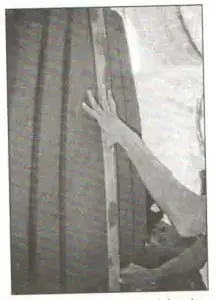
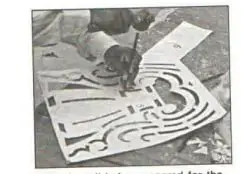
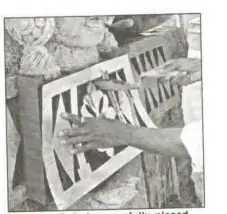
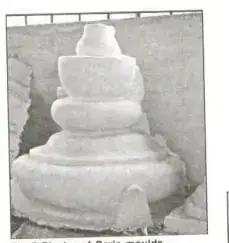

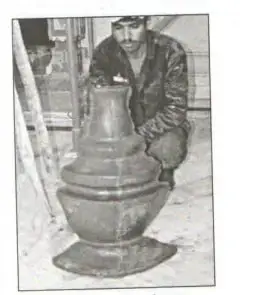


It is an extremely radiant post. I really enjoy it. It’s one of the best posts I’ve read in a long time. Thank you very much for the exceptional blog post. I really appreciate it!
Thank you for your appreciation.